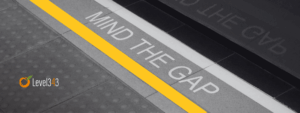Table of contents
- ChatGPT Revolution: A Breakthrough in Content Generation
- Integrating ChatGPT with SEO and Content Strategy
- Keeping Content Natural and Customer-Centric
- Allowing Spontaneity and Tangents
- Turning Your ChatGPT into a Potent Content Creation Tool
- ChatGPT: The Bold, the Beautiful, the Attached
- Optimizing Content via ChatGPT
When all the hoopla of AI in general, and ChatGPT for content creation specifically, came around my desk, I knew we were looking at a long road ahead. Since then, the AI landscape hasn’t stopped evolving. In fact, I’d be willing to bet that each iteration is evolving at a steadily increasing rate.
AI tools such as ChatGPT are growing in significance across industries – an equal opportunity levelizer. The term “game-changers” has been overused in the last decade or so, but AI truly is. What was once only for the highly trained is now available to the untrained, at least for a reasonable facsimile of production.
For digital marketing agencies like ours, AI in content creation has quickly become a matter of “learning how to use them or quickly disappearing into the “outdated” closet. We’ve gone from “should we, shouldn’t we” questions to “how should we, when should we” questions, and finally to “which should we.”
With that in mind, we’ve found ChatGPT specifically to be an excellent content-creation tool, especially when compared to Bard, Copilot or a handful of other models. AI tools have become part of our modern content strategies, changing them from a series of tasks into an innovative process.
I can only imagine what questions content producers are asking in the face of these somewhat “automated” tools.
One of them, I’m sure, is, “What do I need a content creator for now?”
Another one might be, “How much do I need a content creator for now?”
I’ve always been proud of our holistic approach to content marketing and content development. The purpose of this article is two-fold. First, I want to share this fantastic tool and what it can really do. If you’ve been wondering about using ChatGPT for content creation, this will be a helpful resource for you.
Secondly, I want to answer the question: At what point does using AI turn from a supporting tool into a drain on your business?
I hope that my transparency helps you understand what you can reasonably do with Chat and what you need a professional content producer for. Let’s talk about it.
ChatGPT Revolution: A Breakthrough in Content Generation
The invention of ChatGPT is a significant breakthrough for content creation. This AI-driven tool, accessible on platforms like OpenAI’s Playground and GPT-3 Sandbox, is not just a technological marvel but a versatile assistant for content creators.
The Technical Short Story
ChatGPT uses advanced machine learning (ML) algorithms that allow it to generate text that mimics human writing. This technology is a part of the broader AI field known as natural language processing (aka NLP), which allows the AI to understand and respond to human language in a way that is both coherent and contextually relevant.
One of the things I like most about ChatGPT is how easy it is to use. You can easily sign in to your chosen platform and hook into Chat. You can configure the tone of voice, how complex the language you use, and even specific content styles. This level of customization makes sure that the output is SEO-friendly content that aligns with your target audience.
Beyond these customization features, ChatGPT’s content creation capabilities provide several types of content. It can help you draft blog posts, create engaging social media updates, generate informative articles, and even write surprisingly creative stories or scripts.
To illustrate, imagine you’re tasked with creating a series of blog posts on digital marketing trends. By feeding ChatGPT with specific prompts related to your topic, it can generate initial drafts, suggest content ideas, provide tips to improve your content, or even help with headlines. This support can significantly streamline the content creation process, saving time in a way that allows you to focus on refining and personalizing the material.
Integrating ChatGPT with SEO and Content Strategy
Leveraging SEO software like Semrush can yield great results. When integrated with Chat, you can take content creation to a new love of efficiency and creativeness. You can use Semrush to generate high-performance keywords and topics and allow ChatGPT to build upon and integrate them into compelling content. Together, it allows us to create content that is engaging, well-written, optimized for search terms, and targeted for the key audience.
We’ve been using SEMRush’s SEO Content Template to develop our content. This not only gives us a few (10 links) of articles that are similar to the title of our articles but it will also give us semantically related words that we can pepper throughout our content.@
With the right prompts, ChatGPT’s capabilities extend to other content strategy aspects. This includes audience analysis, where ChatGPT can help create content tailored to specific audience segments based on their search behaviors and preferences. In competitor research, ChatGPT can assist in analyzing competitors’ content and identifying gaps or opportunities for differentiation.
Benefits of Integrating ChatGPT with SEO Tools
Are there specific benefits of using Chat with your SEO tools? Yes! This is one of the main reasons for this article. I’m consistently blown away by the variety of uses content writers can find with ChatGPT. And this is just the free version…
- Enhanced Content Relevance: ChatGPT, armed with insights from SEO tools and traffic data, can help you create content that resonates more with target audiences and search engines.
- Efficiency in Content Creation: Streamline the content development process by quickly generating drafts and ideas that are already aligned with SEO best practices.
- Innovation in Content Strategy: Leverage AI to identify and capitalize on emerging trends, giving your content a competitive edge.
Best Practices for Effective Integration
- Clear and Targeted Prompts: When using ChatGPT for content creation, provide clear and detailed prompts based on the insights gleaned from SEO tools to ensure content relevance and optimization.
- Regular Updates and Iterations: Continuously update your SEO strategy based on the latest trends and algorithms, and use ChatGPT to revise and refresh content accordingly.
- Balancing AI and Human Input: While ChatGPT can generate initial drafts and suggestions, human expertise is crucial for fine-tuning content, ensuring it aligns with your brand voice and meets your audience’s needs.
By embracing this integration, content creators can not only optimize their content for search engines but also ensure it is engaging, valuable, and strategically aligned with their overall marketing goals. This synergy between AI-generated content and SEO tools represents a significant step forward in creating digital content that stands out in a crowded online space.
Keeping Content Natural and Customer-Centric
Balancing natural content with SEO optimization is an important aspect of modern content creation. This balance ensures that while your content ranks well on search engines, it also resonates with your audience as authentic, engaging, and valuable. Here’s a breakdown of how to achieve this balance:
1. Start with quality, reader-focused content.
- Audience First: Begin by understanding your audience’s needs, search intent, and pain points. Your content should primarily aim to provide value to them, addressing their questions or offering solutions to their problems.
- Natural Flow: Write in a conversational tone that feels natural and easy to read. The content should flow smoothly, as if you’re having a dialogue with your reader.
2. Integrate SEO thoughtfully.
- Keyword Integration: Use keywords naturally within the content. They should fit seamlessly into the text, without disrupting the natural flow or making the content feel forced.
- Semantic Variations: Incorporate variations and long-tail versions of your main keywords for better SEO. This also makes the content appear more natural and less repetitive.
3. Prioritize content structure.
- Headings and Subheadings: Use them strategically to break down the content into digestible sections. This aids readability and allows for better keyword placement.
- Bullet Points and Lists: These are great for readability and can also be an opportunity to naturally include keywords.
4. Remember quality over quantity.
- Avoid Keyword Stuffing: Overloading your content with keywords can make it unreadable and lead to penalties from search engines.
- Content Depth: Focus on the depth and relevance of your content. Comprehensive coverage of a topic is often more beneficial than superficial content crammed with keywords.
5. Update and optimize regularly
Content Refresh: Regularly update your content to keep it relevant and incorporate new keywords or topics trending in your industry.
SEO Audits: Conduct periodic SEO audits to ensure your content remains optimized for search engine algorithms, which are constantly evolving.
6. Leverage AI Tools with Discretion
- AI Assistance: Use AI tools like ChatGPT for initial drafts or ideas, but always refine the output to ensure it aligns with your brand voice and audience’s expectations.
- Human Touch: Remember that AI cannot fully replicate the human understanding of nuance and emotion, which are crucial in creating content that truly connects with readers.
Balancing natural content with SEO optimization is about merging art and science with your products and services. The art lies in creating content that speaks to human emotions and interests, while the science is in the strategic use of SEO techniques to ensure visibility. Achieving this balance is key to successful content that both engages readers and performs well in search engine results.
Allowing Spontaneity and Tangents
In writing naturally, going off tangent at times is part of the process—it’s the beauty and unique flavor of spontaneous writing. My thoughts are not robotic, so when I write a piece of content naturally, I don’t restrict ourselves to rigid guidelines.
When you let your thoughts guide you, the discourse remains free-flowing, and in turn, more engaging for readers. Being verbose might seem counterproductive, but with an experienced editor (like mine) they chisel away the unnecessary words. I often end up with refined and sharp content, ready to go live.
With that in mind, there are also instances where you need structure and organization. An example of this is an e-commerce business, where regardless of the product, you need to ensure that your data is systematic and accurate while still appealing to the buyer.
So how can you effectively utilize ChatGPT in an e-commerce business? When it comes to using ChatGPT in an e-commerce business, there are cases where a more structured approach is necessary. To illustrate this, let’s take a look at an example based on our experience with a client.
ChatGPT: Elevating E-commerce Business
Here’s a secret: ChatGPT isn’t just for long content. Gasp!
If you have an e-commerce business, you’ve been given an excellent way to elevate your business reputation. Here are a few ways:
- ChatGPT for Unique Product Descriptions: Spice up your product lineup by generating fresh, appealing descriptions.
- Target Market Exploration with ChatGPT: Understand and appeal to your key demographics by using ChatGPT’s insightful data analysis capabilities.
- Branding Reinvention through ChatGPT: Catalyze unique, captivating branding concepts utilizing ChatGPT’s brainstorming abilities.
- ChatGPT for Supplier Communication: Strengthen your supplier connections through well-crafted, professional emails generated by ChatGPT.
- Enhancing Customer Experience via ChatGPT: Streamline your customer service operations through automation services powered by ChatGPT.
- ChatGPT for Analyzing Product Reviews: Delve deep into customer feedback—use ChatGPT to extract key insights from product reviews.
- Mastering Social Media Content with ChatGPT: Create compelling, virality-potential content for your social media channels with the help of ChatGPT.
- Customized Email Campaigns via ChatGPT: Use ChatGPT to strike the right chord with your customers, creating engaging email marketing campaigns.
- ChatGPT for Converting Ad Copy: Boost ad effectiveness by creating persuasive text for paid advertising using ChatGPT.
It’s important to maximize the value of your AI assistant. This means asking targeted questions that provide the necessary information to the model. For instance, instead of just requesting meta tags, product descriptions, and articles, it’s crucial to include essential human elements in your content.
Let’s consider the example of a specialty drink. To get the most out of your AI assistant, you can include some human element that will enhance your prompts, such as:
- Which challenge is the most difficult to overcome when creating a specialty drink?
- What are some tips to remove this challenge and achieve the desired outcome?
- Can you provide an example of each tip in action?
By structuring your prompts in this way, you can guide the AI assistant to generate valuable insights and practical advice related to your specialty drink.
Turning Your ChatGPT into a Potent Content Creation Tool
To fully harness the capabilities of ChatGPT in content creation, it’s essential to understand that its true power lies in the synergy between AI efficiency and human ingenuity. While ChatGPT can generate a wide array of content types, the best results are achieved when its output is blended with the unique flair of human creativity.
Let’s see what that looks like.
Use Chat to spark ideas.
You’re a health and wellness content creator, and you need fresh, engaging article ideas. How do you do that?
- I need to create several unique articles about health and wellness on the topic of holistic health approaches and natural remedies. Can you suggest some innovative topics? – This prompt will give you a list of article titles only.
- Provide me with ten unique concepts around the topic of natural remedies. My target audience is people who are interested in holistic health options. – This prompt provides blog and article titles and concepts.
Refine the ideas.
Once chat gives you titles, you can choose one and begin building it out.
- Can you provide me with some subtopics or key points for an article on “The Power of Herbal Teas?” – The output is something like potential section titles. Example: “How to select and brew herbal teas” may be a good section.
- Provide me with a draft outline for “The Power of Herbal Teas” – Here, you’ll get a full concept draft, from introduction to conclusion. Example: Introduction: A brief overview of herbal teas, their growing popularity, and what you intend to talk about in the article.
Research and personalize the content.
Use the draft concept or the section titles (or both!) as a starting point. What information do you already have that you can use to develop your landing page or article? Bring in your personal insights or expert opinion. Research to add depth and verify facts. Consider linking to a few of the web pages you used for data as an additional search signal.
Craft the final content.
Write the article, making sure to add your unique style and voice. Use the subtopics provided by ChatGPT as a guideline. Remember, it’s not a “you must absolutely use XYZ.” Feel free to add, omit, or modify sections to better suit your audience and objectives.
Optimize and finalize the content.
Make sure you use your relevant keywords, meta descriptions, and any planned visuals. Make sure the content is reader-friendly and provides real value.
In this way, ChatGPT can serve as an initial brainstorming tool, sparking ideas and providing a basic structure to expand upon with your creativity and expertise.
ChatGPT: The Bold, the Beautiful, the Attached
When you look through the steps above, one thing is consistent through all of them: human interaction. It’s crucial (and I mean both syllables of that word) that you understand Chat isn’t a standalone solution.
It’s beautiful.
It’s bold.
It’s attached… to its human counterpart, the content creator.
It’s a powerful aid in the creative process, but it’s just an aid. It serves as a starting point, offering initial ideas and frameworks that can be expanded upon and refined. The role of the content creator, therefore, is to critically evaluate and enhance the AI-generated material. This involves tailoring the content to align with your brand’s voice, ensuring it meets the specific needs and expectations of your target audience.
Unlocking the full potential of ChatGPT in content creation demands a balanced approach. Don’t be afraid to leverage the strengths of AI for efficiency, agility, and innovation. However, don’t forget to embrace the fantastic depths of human creativity and expertise to create content that is not only high-quality but also genuinely connects with your audience. This balanced approach is what sets apart successful content strategies.
Fast production is all well and good. Low-cost production – cool. But high-quality production that brings in traffic, sales, and brand loyalty is neither fast nor cheap.
Optimizing Content via ChatGPT
The existing content can be transformed to resonate better with your audience with a few tricks up your sleeve. Instruct ChatGPT in a specific and detailed manner and use it efficiently for creating outlines, and expanding topics, which will save a considerable amount of time and let your creative juices flow unhindered. These examples were suggested by my long-time friend and colleague, Mariachiara Marsella, to ensure you’ve covered all necessary topics.
- Lists the entities listed in this text.
- Convert this text into nodes and relationships.
- Are there any additional entities that could be made explicit that are not mentioned here?
Integrating ChatGPT with Content Management Systems for Streamlined Workflows
Content management systems (CMS) are pivotal in organizing and managing digital content. By integrating ChatGPT with your CMS, content production can be even more efficient. Some of the common types of integrations that are either available or in development include API integration, plugins, extensions, and custom development. Of course, these integrations range from very expensive to “I can’t believe this doesn’t cost more.”
Enhancing Content Production Across Platforms
ChatGPT’s flexibility extends beyond creating content to enhancing the overall content production process. With ChatGPT, producing content for different formats becomes easier, whether it’s for blog posts, email campaigns, or social media platforms. It can even take existing content and suggest various ways that content can be shared. The tool can adapt its output to suit the specific requirements of each platform, maintaining a consistent brand voice while optimizing for platform-specific nuances.
Conclusion
ChatGPT is an important advancement in the field of content creation, no doubt. Its ability to integrate with content management systems, enhance content production processes, and adapt to various social media platforms demonstrates its versatility and value.
However, the true essence of content creation still lies in the human touch – the creativity, insight, and personal connection that only a human content creator can provide. ChatGPT is a powerful tool, but it is the synergy between AI efficiency and human creativity that will define the future of content creation. As we move forward, embracing this partnership will be key to developing compelling, effective, and impactful content strategies.
So, let’s return back to the original question I asked in the beginning: At what point does using AI turn from a supporting tool into a drain on your business?
The answer is: when you decide to remove the human element and let AI do your thought leadership. When you allow AI to craft your lead generation strategies and content. When your content output becomes a mix of everybody else’s thoughts, your voice–the thing that makes your brand truly unique–disappears.
My final thoughts: The technology is there. Use it, but use it to support you, not replace you.
Happy prompt engineering.



































